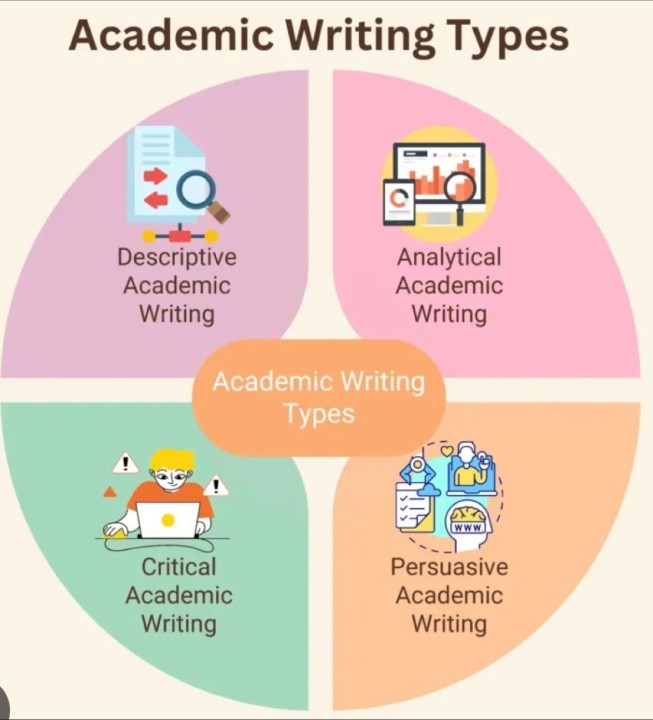This Free Academic Writing Online Course will help you navigate the complexities of academic writing, from developing strong arguments to becoming an expert in citation styles.
This course provides insightful lessons and useful activities to support you in expressing your thoughts in a clear and effective manner, whether you’re a professional, researcher, or student looking to enhance your writing skills.

Are you looking to enhance your academic writing skills and achieve excellence in your scholarly pursuits? Join us on this learning journey and unlock the tools you need to excel in the world of academia.
What is Academic Writing
The formal writing style utilized in academic publications and colleges is known as academic writing. It can be found in academic books and journal articles, writing essays, research papers, and dissertations in an academic manner will be expected of you.
Academic writing adheres to the same writing guidelines as other text but it also follows certain guidelines on content, structure and style.
What to know as a beginner academic writer.
- Types of academic writing
- Structure and format
- Research sources
- Writing Process
- Paraphrasing
- Time management
- Clarity and precision
Writing Process
- Planning: To help you keep your thoughts organized, outline your paper before you begin writing.
- Drafting: To strengthen your points and increase clarity, write several drafts of your work.
- Critical Thinking Analysis: Examine sources critically as opposed to merely summarizing them.
- Originality: Make sure the job you do offers fresh viewpoints or ideas.
- Argumentation: Provide compelling, well-reasoned points and objections.
- Quoting: Always cite your quotes and use them sparingly.
- Paraphrasing: Restate information in your own words and provide proper attribution.
- Editing and proofreading: Check your writing for grammar and punctuation.
* Sample research sources are Google Scholar and Z-library.
*Use Grammarly to help with grammer and Turnitin to check for plagarism.
Types of Academic Writing

The majority of the materials that academics write are meant for publication; these include book chapters, journal articles, reports and edited collections. The following is a list of the most typical kinds of academic writing assignments that students receive.
- Essay: a brief, self-contained argument that answers a question posed by the instructor, frequently referencing sources from the class.
- Thesis or dissertation: a substantial study effort completed at the conclusion of a degree program, typically on a topic selected by the student.
- Research paper: a more comprehensive analysis based on independent study, frequently done in response to a student-chosen topic.
- Research proposal: a synopsis of a possible dissertation or research project topic and strategy.
- Lab report: a summary of the objectives, procedures, findings and recommendations of a laboratory experiment.
- Literature review: an analytical summary of previous studies on a subject, typically published to guide the direction of a new study.
- An annotated bibliography: is a list of references to sources accompanied by a synopsis or assessment of each source.
*Once you receive your question make sure you understand the question and type of the writing assignment given.
Style, structure and format
There are different formats used in academic writing. The common used in academic papers to organize the content include MLA, APA, Chicago or CMA , IEEE and Turabian.
What is APA style?
In 1929, the American Psychological Association developed the APA style. The social sciences, engineering, education, and other fields typically follow the APA style. It is composed of in-text citations that provide the last name of the author, the publication date and if applicable, the page number.
APA 6th Edition Layout Basics
Running Header: TOPIC
Student’s Name
Institution Affiliation
Instructor’s Name
Course
Date
Next page
Running Header: TOPIC
TOPIC
Next Page
Running Header: TOPIC
Last Page
Running Header: TOPIC
READ ALSO: APA 6th FORMAT SAMPLE
APA 7th Edition Formatting Basics
Same format as APA 6th edition without the running header.
READ ALSO: APA 7th FORMAT SAMPLE
What is MLA style?
The MLA style was developed in 1951 by the Modern Language Association. Many humanistic areas adopt this kind of style, particularly in language. Students studying language and literature prefer this writing style.
MLA Layout Basics
Surname 1
Student’s Name
Institution Affiliation
Instructor’s Name
Course
Date
Surname 2
TOPIC
Surname 3
Work Cited
READ ALSO: MLA FORMAT SAMPLE
What is CMA style?
The University of Chicago Press established this style in 1906, it is also known as Chicago or CMS. It is used for formatting your academic essays and making references. . In many case APA and MLA styles are more widely used than Chicago style. The humanities, arts, literature and history are the key fields that use Chicago style.
Reference Sources
- Reliable Sources: Use credible websites, books written by academics and peer-reviewed journals as reliable sources.
- Citation Sources: Properly cite sources using the variety in-text citation styles.
*A sample source you can use for in-text citation and referencing is Cite fast.
Tips for Success
Be Persistent: Writing for academic purposes might be difficult. Continue to get better with practice and feedback.
Time Management: To avoid rushing at the last minute, schedule your writing process to meet deadlines.
Practice Frequently: Writing becomes better with practice. Make time every day to write.
